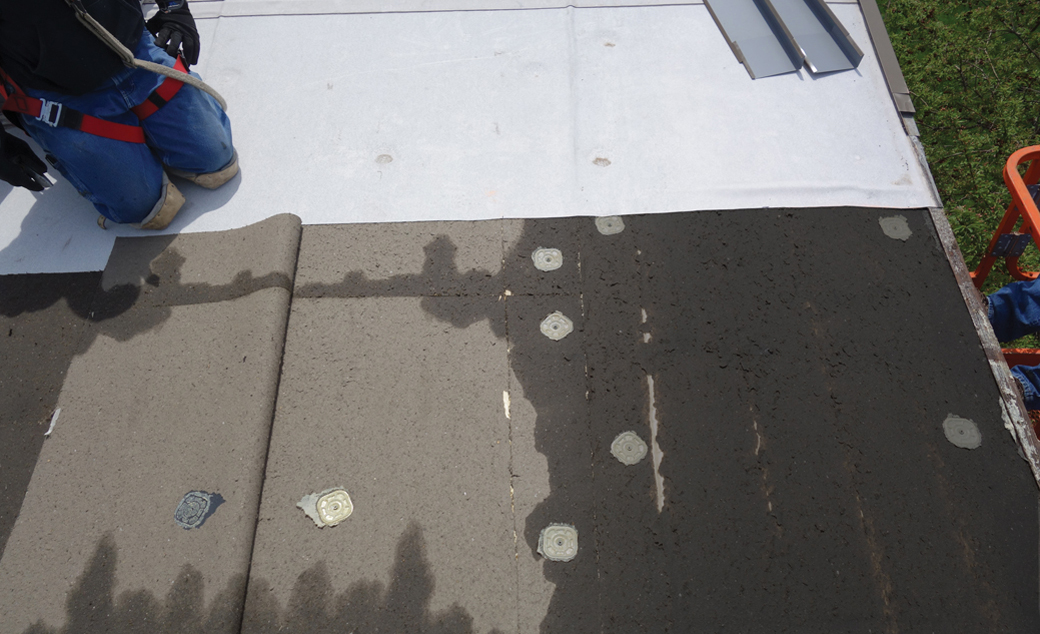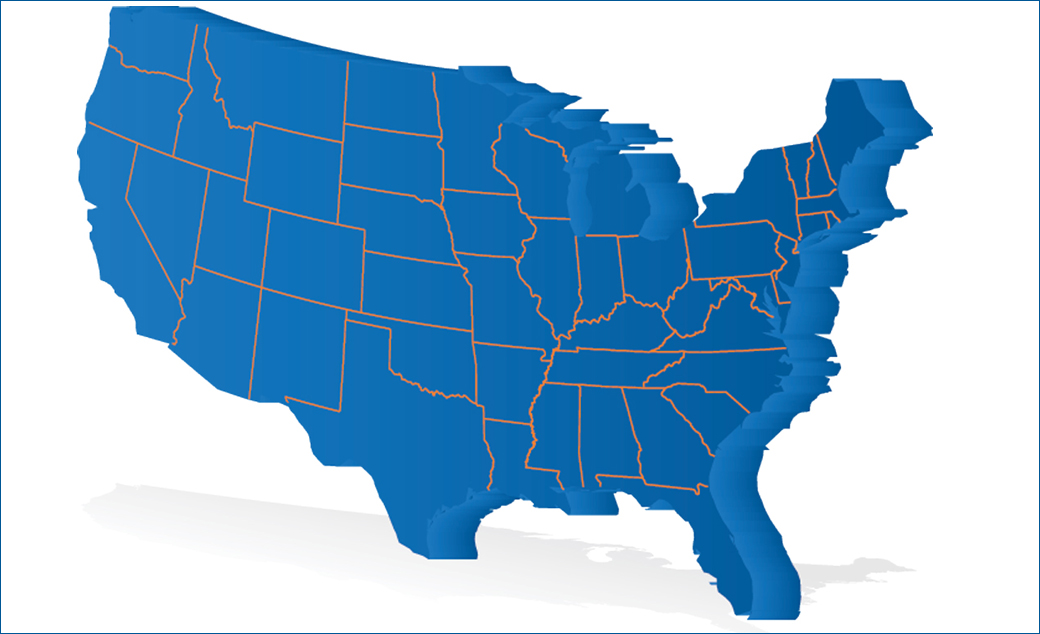Typically, the type of general liability coverage carried by roofing contractors excludes claims stemming from faulty workmanship, design errors, and the use of defective materials or products. A standard commercial general liability (CGL) policy published by Insurance Services Office Inc. (ISO), Jersey City, N.J., a leading source of information and standardization for property and casualty insurers, does not provide insurance protection to roofing contractors for "your (insured's) product" and/or "your (insured's) work."
However, there now is an innovative insurance solution available that can help alleviate your liability from such claims as design errors, defective materials and mold.
The exclusions
Typically, a standard CGL policy contains the following exclusions:
- General Liability Exclusion (K) Damage to Your Product: A standard general liability policy is not intended to be a warranty or guarantee for your installed products. The intent of a standard ISO general liability policy is to protect you for covered causes of loss, including bodily injury and property damage caused to third parties. Covered losses typically include consequential loss and resultant damage that manifests from roofing products installed by a roofing contractor, but a typical general liability insurance policy does not provide insurance coverage for the actual roof system.
- General Liability Exclusion (L) Damage to Your Work: A general liability policy is not intended to protect you from damage to your work. The intent of a standard ISO general policy is to provide coverage to third parties for consequential loss and resultant damage that manifests from your work. A standard general liability policy does not protect a contractor against actual or alleged faulty work. For example, costs for rip and tear as a result of a faulty roof system usually are excluded from general liability coverage.
Quite often, your CGL insurance carrier relies on exclusions K and L to deny third-party damage claims to your products and/or your work. If the CGL insurance carrier denies coverage under these two exclusions, you likely will be forced to absorb litigation defense costs and material expenses under the pretense of exclusions K and L, which undoubtedly will affect your company's cash flow and erode profit margins.
Ready to sleep better?
CNA, NRCA's endorsed insurance provider, now offers errors and omissions, professional and pollution-incident liability coverage for roofing contractors. This innovative coverage is crafted to protect a roofing contractor from design errors and omissions and workmanship claims, including use of defective materials or products, and provides coverage for pollution events, including proactive coverage for mold. CNA promotes the coverage as having no exclusions contained within the pollution policy for asbestos, dust or silica.
If you offer in-house design, value engineering and various roof system recommendations, your company is potentially exposed to financial loss for design errors or omissions if you are insured under a standard CGL policy. CNA's combined errors and omissions and pollution coverages are designed to provide protection to roofing contractors for litigation defense and material rip and tear expenses, subject to policy terms and conditions.
By combining errors and omissions and pollution/mold coverages, you can realize value in transferring the risk of the following:
- Pollution/mold events
- Faulty workmanship
- Use of defective materials
- Design errors or omissions
Mold coverage
Water-intrusion claims are the most frequent root cause of third-party property damage claims in the roofing industry. A water-intrusion event during or after a roof system installation occasionally leads to actual or alleged property damage and bodily injury claims caused by mold growth. ISO's standard CGL policy has an absolute mold, fungi and algae exclusion. Because of this mold exclusion, a roofing contractor typically is not protected under standard CGL coverage for third-party claims stemming from mold allegations that occur during or after a water-intrusion event.
Many roofing contractors, either consciously or unknowingly, absorb the financial risk of actual or alleged faulty workmanship and mold-related events on their balance sheets. Absorbing these types of losses internally causes severe exposure that can affect liquidity and erode years of equity growth.
CNA's combined errors and omissions and pollution/mold coverage typically will protect the insured roofing contractor for pollution incidents caused by downstream subcontractors. My company, Roofing Risk Advisors LLC, a division of risk management firm Frank H. Furman Inc., Pompano Beach, Fla., highly recommends you include a mold exclusion within your contract when practical.
A mold exclusion often is effective for mitigating alleged property damage caused by water intrusion that typically leads to mold-related litigation. An effective strategy to employ is to attach a mold-exclusion rider to the construction contract by an addendum or exhibit. However, be sure to consult with legal counsel before crafting or implementing exclusion language for mold events.
CNA's pollution/mold coverage typically carries a self-insured retention that applies to a per-claim basis. This self-insured retention requires the roofing contractor to fund the self-insured retention portion of the claim. Contrast this with a per-claim deductible typically required by general liability insurance carriers to fund the loss and then submit the invoice to the roofing contractor after the claim file is closed.
Rip and tear coverage
When you evaluate your scope of coverage for errors and omissions and pollution/mold, there is a critical coverage distinction you should research. Most insurance carriers exclude rip and tear protection for roofing work performed by your own crews. The faulty work or construction, means and methods exclusion, contained in most professional liability policies, excludes coverage for the cost to repair or replace self-performed work, generally covering only the liability you may have for the faulty work of a subcontractor. However, the design portion of the errors and omissions coverage typically protects a roofing contractor for design services provided by others and for design-build services drafted in-house.
Simply put, a professional liability insurer's intent is to cover the design-related and pollution exposures of the named insured roofing contractor with limited appetite for workmanship and/or defective roofing exposures. The errors and omissions and pollution-incident coverages offered through CNA responds to allegations of negligence in the performance of design services whether performed by you or on your behalf, your workmanship, and your use of defective materials or products, with broad pollution coverage provided. The potential is lessened for gaps in coverage. Few carriers offer true errors and omissions coverage for errors in construction, means and methods, and the cost to repair or replace, in addition to traditional design and pollution coverage. Most professional liability carriers attempt to distinguish between design and errors and omissions in construction. CNA does not.
Per-claim deductibles
A typical errors and omissions policy usually has a per-claim self-insured retention and co-insurance percentage participation. For example, if your insurance policy has a 90 percent co-insurance provision contained within the errors and omissions policy, you would be liable for 10 percent of the cost associated with a design error, defective material and/or faulty workmanship allegation. This means there may be two internal retentions funded by you.
The per-claim self-insured retention also requires participation from the insured roofing contractor for every claimant that brings an action against it for actual or alleged wrongful acts.
However, the per-claim deductible policy contained in CNA's errors and omissions insurance policy only requires you to pay one deductible even if there are multiple claimants affected from the same event.
Retroactive dates
First-time buyers of errors and omissions and/or pollution/mold coverage will receive a retroactive policy date reflecting the inception date of their CNA insurance policy, often reducing premium costs. For first-time purchasers, CNA has no legacy (backlog) exposures to underwrite, reducing insurance costs within the rating structure.
The errors and omissions and pollution/mold policy is written on a "claims-made" basis. Claims-made coverage requires an alleged incident or event to occur after the retroactive inception date and be reported to the insurance provider before the end of the policy term.
If you currently carry errors and omissions and/or pollution coverage with another insurance provider, it is important to use the original policy retroactive date of coverage to reduce the probability of a gap in coverage when changing insurance providers. A potential gap in insurance coverage when transitioning between carriers can expose you to unfunded claims and subsequent potential financial loss. Close communication with insurance advisers is essential to reduce the probability of a gap in coverage.
The cost
CNA's combined insurance coverage is available in all U.S states and territories. The minimum annual premium for small-sized roofing contractors begins at $3,200 for errors and omissions and $4,200 for combined errors and omissions and pollution coverage. The minimum self-insured retention is $3,000. For midsize and larger commercial roofing contractors, the self-insured retentions may range from $10,000 to $25,000 per claim.
Coverage is provided by Columbia Casualty Co., Chicago, an excess and surplus line provider within the CNA family of companies. The combined errors and omissions and pollution/mold insurance coverages share the same limits of liability, up to $5 million. From an underwriting perspective, the errors and omissions and pollution/mold coverages typically are available to roofing contractors with residential exposures of less than 30 percent and favorable general liability loss experience.
Gain peace of mind
A disciplined risk-reduction approach relative to procuring a solid portfolio of insurance coverage is critical to protecting your cash flow and equity. Most roofing contractors do not want to increase their insurance budgets by adding optional insurance coverages for errors and omissions and pollution/mold coverages, but taking an effective risk-reduction approach will help protect your balance sheet from unfunded losses from design errors and mold claims that could impair your company's ability to meet ongoing and future financial obligations.
You should consult with your insurance adviser to carefully review the potential risk of not procuring protection for errors and omissions and pollution/mold events into your insurance coverages. The peace of mind associated with transferring the risk to a risk bearer (insurance carrier) will allow you to sleep better at night.
Rob Foote is president of Roofing Risk Advisors LLC, a division of risk management firm Frank H. Furman Inc., Pompano Beach, Fla.



